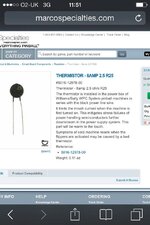Could anyone help me with this please
There a loud him from my fishtales
Backround .it was blowing main fuse ,
Dotmatrix was faulty ,I changed to an xpin control board ,then had to buy a second hand dotmatrix when that didn't fix problem
Changed line filter ,Varistor and thermistor when it started blowing main fuse
Now it's playing ,dotmatrix is working ,but you can't hear the sound /music etc
Just this worryingly loud hum ,that gets so bad ,it sounds like it might blow
There a loud him from my fishtales
Backround .it was blowing main fuse ,
Dotmatrix was faulty ,I changed to an xpin control board ,then had to buy a second hand dotmatrix when that didn't fix problem
Changed line filter ,Varistor and thermistor when it started blowing main fuse
Now it's playing ,dotmatrix is working ,but you can't hear the sound /music etc
Just this worryingly loud hum ,that gets so bad ,it sounds like it might blow




